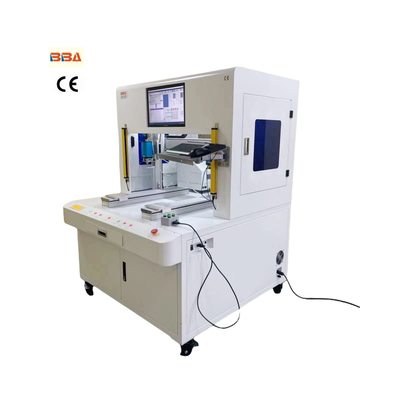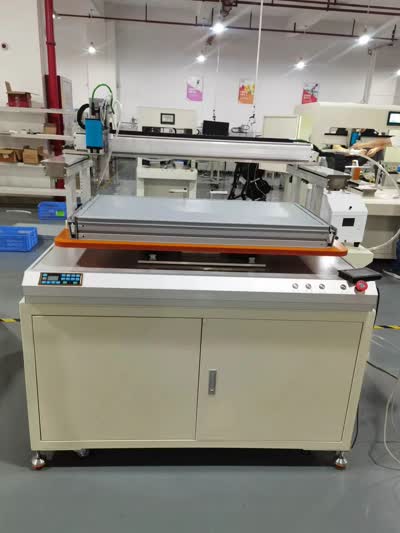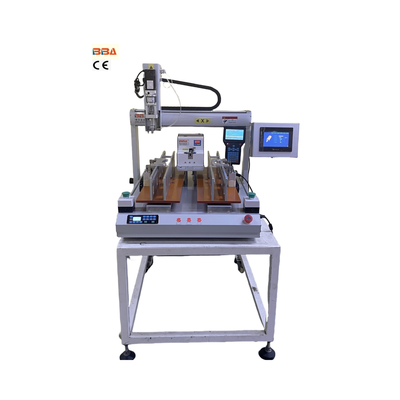Smart Factory Integration with Multi-Axis Screw Robots

Smart Factory Integration with Multi-Axis Screw Robots
The evolution of industrial automation continues to redefine manufacturing efficiency, precision, and scalability. Among the most transformative innovations in this space is the integration of multi-axis screw robots into smart factory environments. These advanced robotic systems are engineered to perform complex fastening tasks with unparalleled accuracy, speed, and flexibility, making them indispensable in modern production lines.
What Are Multi-Axis Screw Robots?
Multi-axis screw robots are sophisticated automation solutions designed to automate screwdriving and fastening operations across multiple degrees of freedom. Unlike traditional single-axis systems, these robots feature articulated arms with multiple joints, allowing them to access hard-to-reach areas and handle tasks at various angles and orientations. Equipped with high-precision sensors and adaptive control systems, they can manage different screw types, sizes, and torque requirements without manual intervention.
Key Benefits for Smart Factories
Integrating multi-axis screw robots into smart manufacturing setups offers several compelling advantages:
- Enhanced Precision and Consistency: These robots eliminate human error by applying exact torque and ensuring perfect alignment every time, significantly reducing product defects and improving quality control.
- Increased Productivity: With the ability to operate 24/7 at high speeds, multi-axis robots drastically shorten cycle times and boost overall output, allowing factories to meet growing demand without compromising on quality.
- Flexibility and Adaptability: Thanks to their programmable nature and multi-axis design, these robots can be quickly reconfigured to accommodate new product designs or assembly processes, supporting agile manufacturing practices.
- Worker Safety and Ergonomics: By taking over repetitive and physically straining tasks, these robots reduce the risk of workplace injuries and free up human operators to focus on higher-value activities such as supervision and process optimization.
- Data-Driven Insights: Integrated IoT sensors collect real-time data on performance metrics, enabling predictive maintenance, continuous process improvement, and seamless integration with broader smart factory systems.
Implementation in Smart Factory Ecosystems
Successful integration of multi-axis screw robots requires careful planning and synchronization with existing automation infrastructure. These robots are typically deployed in assembly lines, electronic manufacturing units, automotive production, and other sectors where precision fastening is critical. They communicate seamlessly with central control systems through industrial IoT protocols, allowing for coordinated operations with other machines such as conveyors, pick-and-place units, and quality inspection systems.
To maximize ROI, companies should prioritize scalability and interoperability when selecting these solutions. Modern multi-axis screw robots support modular designs and open architecture software, making it easier to expand capabilities or integrate new technologies in the future.
Future Outlook
The future of multi-axis screw robotics is closely tied to advancements in AI and machine learning. Next-generation models are expected to feature improved vision systems, self-learning capabilities, and even greater autonomy. These developments will further enhance their ability to handle complex, unstructured environments and collaborate safely with human workers.
As smart factories continue to evolve, multi-axis screw robots will play a pivotal role in enabling fully autonomous production lines. Their contribution to efficiency, quality, and adaptability makes them a cornerstone of the Industry 4.0 revolution, helping manufacturers stay competitive in a rapidly changing global market.
Embracing this technology is no longer optional for forward-thinking manufacturers—it is essential for those aiming to achieve new heights of operational excellence and innovation.
| Product Name | Applicable industries |
| Desktop Screwdriver Robot | Automotive Electronics Assembly |


